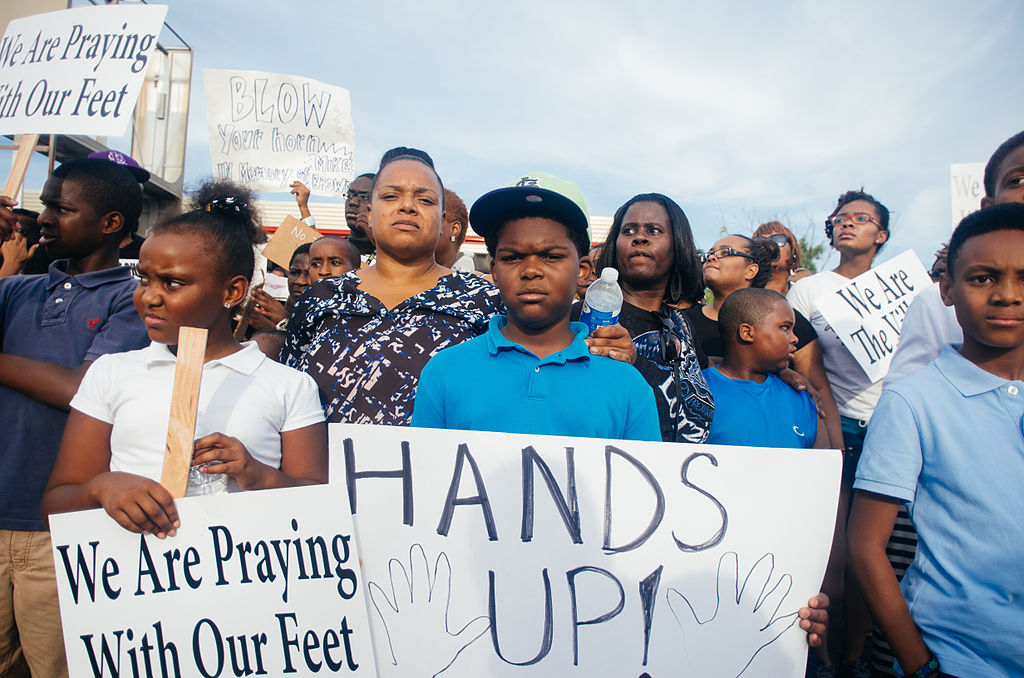
When Art and Activism Collide
Young people find voice, power and change
The high school generation is galvanizing people worldwide to demand gun reform, and the mobilization of hundreds of thousands of protestors at the March For Our Lives this spring made their leadership clear. Now that the march is over, how can adults who came out for the march continue to support and help build youth power?
As arts educators, we offer one potential answer: To catalyze what’s possible, adult writers and artists need to share their tools and platforms with youth.
In our combined 30 years of experience facilitating writing workshops with communities under pressure, we have seen that before people can take action, they must reimagine what’s possible. A poem scribbled in a writing workshop becomes human rights testimony before the U.S. Senate. A monologue performed in a tiny community theater leads to a career in documentary film.
If we dedicate arts mentorship time to amplify youth voices, it will radically expand the perspectives heard in our democracy. Artistic practices plant the skills necessary for civic engagement, such as critical thinking, empathy, and using a public voice.
Some have argued Parkland, Florida, students offer prime examples of a creative education paying off. Their fairly wealthy school offered training in drama, creative writing and visual arts that prepared them for this moment by nurturing their courage and self-expression.
Likewise, teens in the Black Lives Matter movement, who have been calling for gun safety for a long time, offer examples of the value of arts—via community-based arts taught by grassroots groups. A recent Youth for Black Lives teach-in in Chicago offered workshops in photography, poetry-as-self-healing, and the study of educational inequity.
Parkland survivors and Youth for Black Lives met to join efforts. Parkland activist Emma Gonzalez wrote in Time, “[w]e stand in solidarity with those who have struggled before us, and we will fight alongside them moving forward to enact change and make life survivable for all young people.”
So often the arts are treated as an unnecessary luxury in our education system, and few public schools offer Parkland’s array of arts electives. Yet we can’t wait for school funding trajectories to change before creative education is accessible. We have resources at hand: community spaces, artists and writers.
The co-founder of Youth for Black Lives, Eva Maria Lewis, 19, was nurtured and mentored through the poetry slams, art, dance. She performed at Chicago’s famous Louder than A Bomb youth poetry festival as a teen, and launched “The I Project,” which uses art and activism to provide resources for an impoverished elementary school. She also writes for Teen Vogue.
Our intern, Lilli Hime, a 20-year-old poet at St. Edward’s University, was nurtured by the Austin, Texas, poetry slam team and her writing professors. She then began hosting literary creative events on her campus, with themes like speaking out against sexual assault. Her desire to make safe space for the voices of others propelled her to found an organization called America I Will to support civic engagement and social justice work among students.
Where are the writers and artists who have time to mentor youth and lead workshops in communities? While many already work with youth (often for free) to contribute to social change, many more are needed. What if the nearly 4,000 people who graduate each year with a master’s of fine arts degree in creative writing each reached out to one student? We could begin there.
Arts education alone can’t counter all the forces working against our youth, but it can help advance a movement. And while offering opportunities to students, it will also change the adults who work with them. Because if we are committed to having a reciprocal relationship with young people, ready to honor, listen and truly hear, we will transform our own lives as well.
The epidemic of gun violence has brought people to the streets to demand change. It has also offered us powerful young activists like Eva Marie Lewis and Emma Gonzalez, whose powerful speech at the Washington march has gone viral.
Yet we know there are thousands more like Lewis and Gonzalez out there, smart and visionary youth who want to build a better world than the one they inherited. They deserve our support — at their marches and in the offices of our legislators. And also at their afterschool programs, open mics, community centers and face-to-face at a shared table.
For more information about free Clemente Courses in the Chicago area, look here.
Abe Louise Young is a poet and educator who leads story-based social change workshops for advocacy groups nationwide. Vivé Griffith, a Public Voices Fellow, is an essayist and former director of Free Minds, a program offering free college humanities classes to low-income adults.
This is a story about the Community Safety and Peace strategy of the Partnership for Safe and Peaceful Communities.


